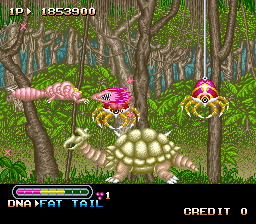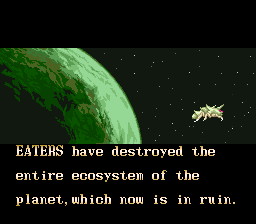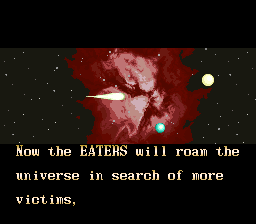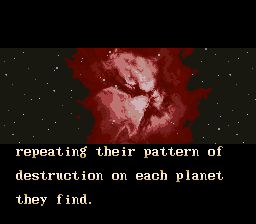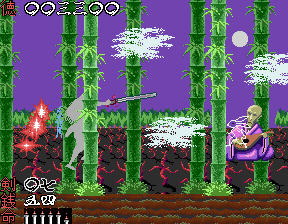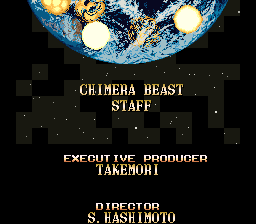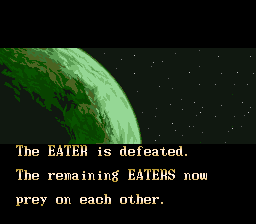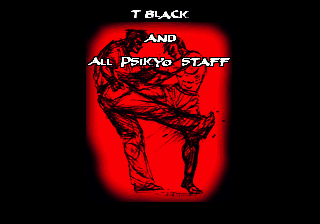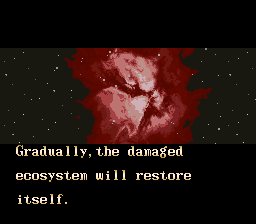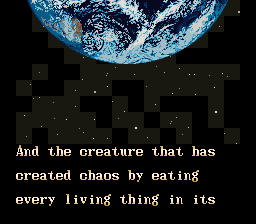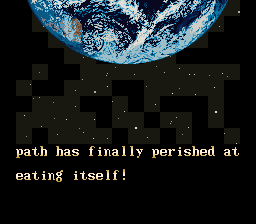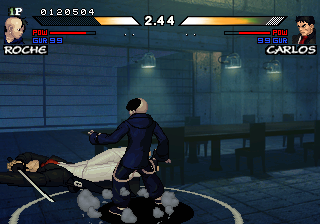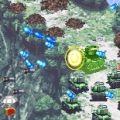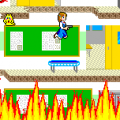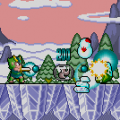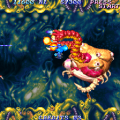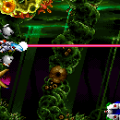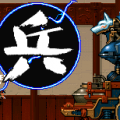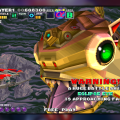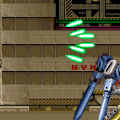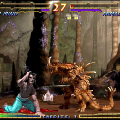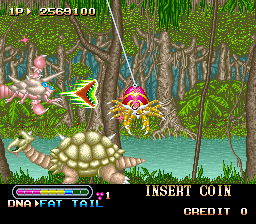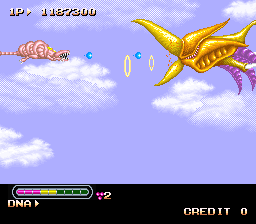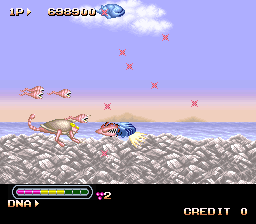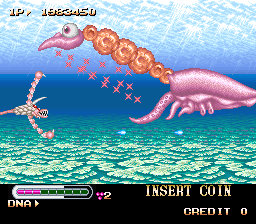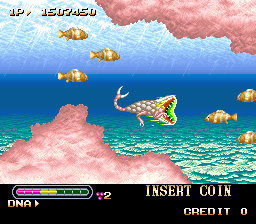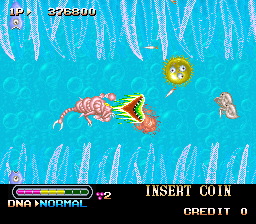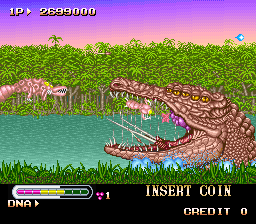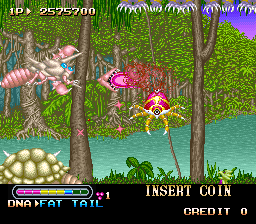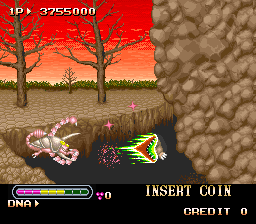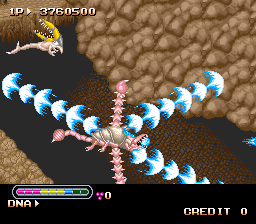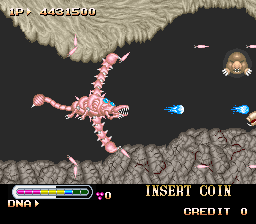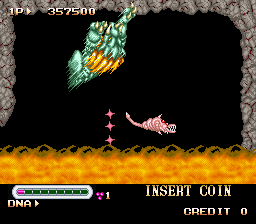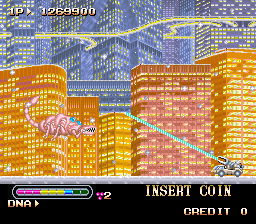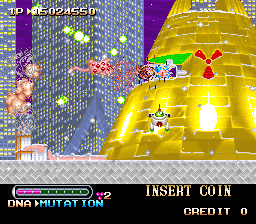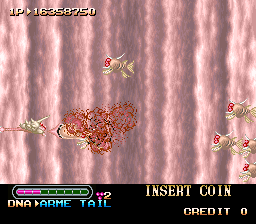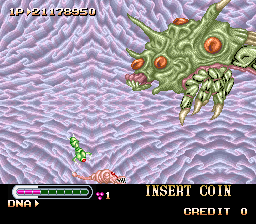Good ol’ Jaleco. While not quite as famous as other quirky developers and publishing companies like Taito and Data East, they tried a lot of quirky insane stuff that, while not usually acknowledged, are pretty fun. Take 64th Street: A Detective Story, which sounds like a potential adventure game but is really a Final Fight clone with pirates, cyborgs, and kabuki fighters. There’s also the possess-em-up Avenging Spirit, where you die and your ghost takes control of ninjas, mobsters, and vampires to rescue your girlfriend. Both of these games were ostensibly developed by another party known only as “C.P. Brain,” a small company formed by ex-staff of another small company, Aicom, who worked on the likes of Vice: Project Doom and Robowarrior. They’re probably best known for their Jaleco output, which includes the aforementioned two games along with Big Striker, a competent yet pretty standard soccer game, and one more game which was never officially released in public. Their last Jaleco offering remained in darkness for several years until the advent of emulation excavated it from the ruins where it lie dormant. Woe became the researchers of MAME, for they had awoken the perverse lunacy of Chimera Beast.
Forgive the Lovecraftian last couple sentences, but the premise of Chimera Beast is essentially a cosmic horror story where you actually PLAY as the eldritch atrocity instead of fighting against it or being driven insane by its mere presence. On a planet that’s like Earth but not actually it, evolution has somehow managed to form the Eaters, chaotic evil lifeforms which know no other purpose than to consume and assimilate everything in existence. You play as an Eater, a disgusting flesh-colored jagged-teeth multi-eyed flying monster with ambition and an abnormally abiding appetite. The premise of the game is thus quite simple: Consume and obliterate everything that moves. This sets you across seven stages of airborne chaos that actually follows a unique theme of biological nature. Your Eater starts out amongst microbes before growing up to eat fish, then birds, reptiles, and mammals. There are two more levels to come after, but those deserve special focus for later.
The Eater’s growth isn’t just a story gimmick, but it’s also Chimera Beast‘s defining gameplay trait. You have your typical fire button which can be held to deliver a charge attack, but your alternate fire button sends out the Eater’s mouth to gulp up whatever is in front of it. Not only do your jaws deal considerable damage, but in a mechanic somewhat akin to Gaiares on the Genesis, eating enough enemies makes you stronger and gives you new abilities. Your lifebar (a rarity for the genre) can increase to a potential of nine notches, and your Eater grows if it gets high enough, making it harder to dodge attacks. Conversely, you shrink if it drops to the red, making things a little fairer when it gets too rough. Still, you’ll want to grow big and assimilate your foes, where your powers are vaguely akin to how the enemies attack or look. For instance, these googly-eyed blobs in the first stage give the Eater an entire body full of eyes that manifests as a powerful charge attack, where the eyes pop out of your body and home in on enemies.
It certainly took a good deal of sprite work to physically change your Eater for each significant evolution. You can have a body full of spikes or coated in a hard shell, a slim double-pronged tail or a really fat one resembling a wasp stinger, large pincer arms that jut out of your sides, and little Eater children that act like Gradius options. Your main means of attack becomes stronger as you grow, but you’ll still want to throw out your mouth as much as possible, and it really hurts bosses to use your main fire in tandem with jaw attacks. Said bosses look incredibly awesome, including twin eel creatures, a big pink one-eyed squid, a freakish bird which is mostly a giant head and beak, and a gargantuan crocodile head with five eyes. Once you beat the badass lion wolf at the end of the mammal stage, where else is there to go? Well, the game’s tone takes a turn for the grim when the penultimate stage is “Mankind,” and you tear up a city during what seems to be some sort of nuclear winter. By this point, you’ve become a kaiju and human defense forces attempt to take you down with tanks, jets, and big guns. You can’t grow by eating machines, only from consuming the humans that fly out of them after destruction. If you survive the gauntlet of guns, the “boss” is anticlimactic but dramatic, where you blow up a nuclear reactor and take the entire city with it.
The final stage, “Catastrophe,” takes place within the atomic blast as many other Eaters attempt to prove their superiority and take you out. You get to destroy a space shuttle in order to snuff out humanity’s last hope of fleeing their Eater-ravaged home planet, and the super-tough final battle is against a colossal Eater who shares some of your attacks and has several others which you don’t. You need to take out its many eyes (what is it with this game and multiple eyes anyway?) to kill it, and the resulting ending says that you go on a cosmic eating spree and eventually work your way to Earth. This is called the “Bad Ending,” but if you decide to not continue when fighting the final boss, you’re instead told that the Eaters eventually take themselves out and the ecosystem has a chance of being restored. This is called the “Good Ending,” but the “Bad Ending” is the only one that gets you the credit roll! You’re the villain, after all, so why should you end the game on an unsatisfying positive note?
Chimera Beast has a unique premise which defines both its gameplay and level structure, and the only other game that even comes close to being anything like that is the offbeat E.V.O.: The Search for Eden. Its music isn’t much to write home about aside from its impressive boss theme, and the difficulty can be somewhat unfair at times, but it’s still a shooter that deserves recognition and speculation as to why it was never released. Everything about it feels complete enough to qualify for mass production, so its cancellation remains a mystery. It’s not that the game would have likely brought in big bucks for Jaleco, but for what it’s worth, at least one of the most innovative and nihilistic shooters in history is playable in some fashion.
Links:
Arcade Heroes Look into Chimera Beast, including design documents.
BBH’s Waste of Bandwidth Review of Chimera Beast
Bogleech A look at some of the spritework for Chimera Beast
“Bad Ending” Screenshots
“Good Ending” Screenshots
